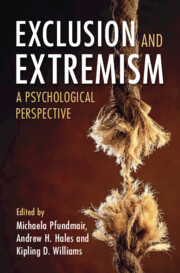3600 results
Central bank digital currencies: an old tale with a new chapter
-
- Journal:
- Financial History Review , First View
- Published online by Cambridge University Press:
- 18 September 2024, pp. 1-29
-
- Article
-
- You have access
- HTML
- Export citation
Genetic architecture and socio-environmental risk factors for major depressive disorder in Nepal
-
- Journal:
- Psychological Medicine , First View
- Published online by Cambridge University Press:
- 16 September 2024, pp. 1-9
-
- Article
-
- You have access
- HTML
- Export citation
Effect of depression treatment on health behaviors and cardiovascular risk factors in primary care patients with depression and elevated cardiovascular risk: data from the eIMPACT trial
-
- Journal:
- Psychological Medicine , First View
- Published online by Cambridge University Press:
- 10 September 2024, pp. 1-14
-
- Article
-
- You have access
- HTML
- Export citation
Historical and archaeogenomic identification of high-status Englishmen at Jamestown, Virginia
-
- Article
-
- You have access
- Open access
- HTML
- Export citation
Oxidative Power of Smectites Measured by Hydroquinone
-
- Journal:
- Clays and Clay Minerals / Volume 21 / Issue 5 / October 1973
- Published online by Cambridge University Press:
- 01 July 2024, pp. 337-350
-
- Article
-
- You have access
- Export citation
1,10-Phenanthroline Complexes of Fe(II) and Cu(II) Adsorbed Onto Hectorite Surfaces
-
- Journal:
- Clays and Clay Minerals / Volume 26 / Issue 2 / April 1978
- Published online by Cambridge University Press:
- 01 July 2024, pp. 178-179
-
- Article
-
- You have access
- Export citation
Crystal Imperfections with Regard to Direction in Kaolinite Mineral
-
- Journal:
- Clays and Clay Minerals / Volume 22 / Issue 1 / February 1974
- Published online by Cambridge University Press:
- 01 July 2024, pp. 117-125
-
- Article
-
- You have access
- Export citation
Kaolinite, Smectite, and K-Rectorite in Bentonites: Relation to Coal Rank at Tulameen, British Columbia
-
- Journal:
- Clays and Clay Minerals / Volume 28 / Issue 4 / August 1980
- Published online by Cambridge University Press:
- 01 July 2024, pp. 241-254
-
- Article
-
- You have access
- Export citation
Factors associated with chronic depressive symptoms across adolescence and young adulthood: a UK birth cohort study
-
- Journal:
- Epidemiology and Psychiatric Sciences / Volume 33 / 2024
- Published online by Cambridge University Press:
- 26 June 2024, e32
-
- Article
-
- You have access
- Open access
- HTML
- Export citation
Contributors
-
- Book:
- Exclusion and Extremism
- Published online:
- 16 May 2024
- Print publication:
- 23 May 2024, pp ix-x
-
- Chapter
- Export citation
Introduction
-
-
- Book:
- Exclusion and Extremism
- Published online:
- 16 May 2024
- Print publication:
- 23 May 2024, pp 1-4
-
- Chapter
- Export citation
Part III - Topics Related to the Exclusion–Extremism Link
-
- Book:
- Exclusion and Extremism
- Published online:
- 16 May 2024
- Print publication:
- 23 May 2024, pp 237-307
-
- Chapter
- Export citation
Part I - The Link between Exclusion and Extremism
-
- Book:
- Exclusion and Extremism
- Published online:
- 16 May 2024
- Print publication:
- 23 May 2024, pp 5-120
-
- Chapter
- Export citation
Copyright page
-
- Book:
- Exclusion and Extremism
- Published online:
- 16 May 2024
- Print publication:
- 23 May 2024, pp iv-iv
-
- Chapter
- Export citation
Dedication
-
- Book:
- Exclusion and Extremism
- Published online:
- 16 May 2024
- Print publication:
- 23 May 2024, pp v-vi
-
- Chapter
- Export citation
Part II - Drivers of the Exclusion–Extremism Link
-
- Book:
- Exclusion and Extremism
- Published online:
- 16 May 2024
- Print publication:
- 23 May 2024, pp 121-236
-
- Chapter
- Export citation
Index
-
- Book:
- Exclusion and Extremism
- Published online:
- 16 May 2024
- Print publication:
- 23 May 2024, pp 308-312
-
- Chapter
- Export citation
1 - Ostracism and Extremism
- from Part I - The Link between Exclusion and Extremism
-
-
- Book:
- Exclusion and Extremism
- Published online:
- 16 May 2024
- Print publication:
- 23 May 2024, pp 7-26
-
- Chapter
- Export citation
Contents
-
- Book:
- Exclusion and Extremism
- Published online:
- 16 May 2024
- Print publication:
- 23 May 2024, pp vii-viii
-
- Chapter
- Export citation

Exclusion and Extremism
- A Psychological Perspective
-
- Published online:
- 16 May 2024
- Print publication:
- 23 May 2024

